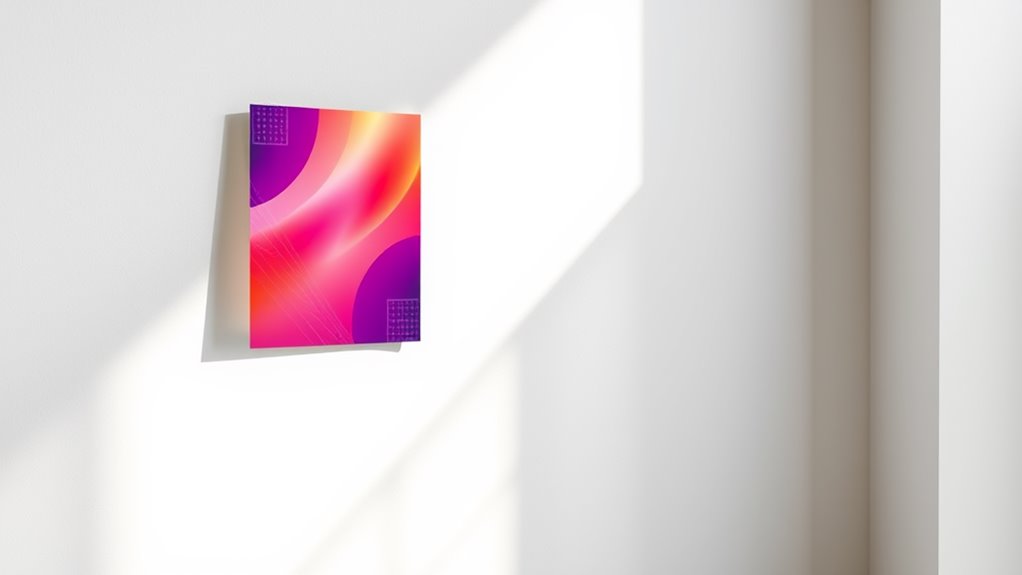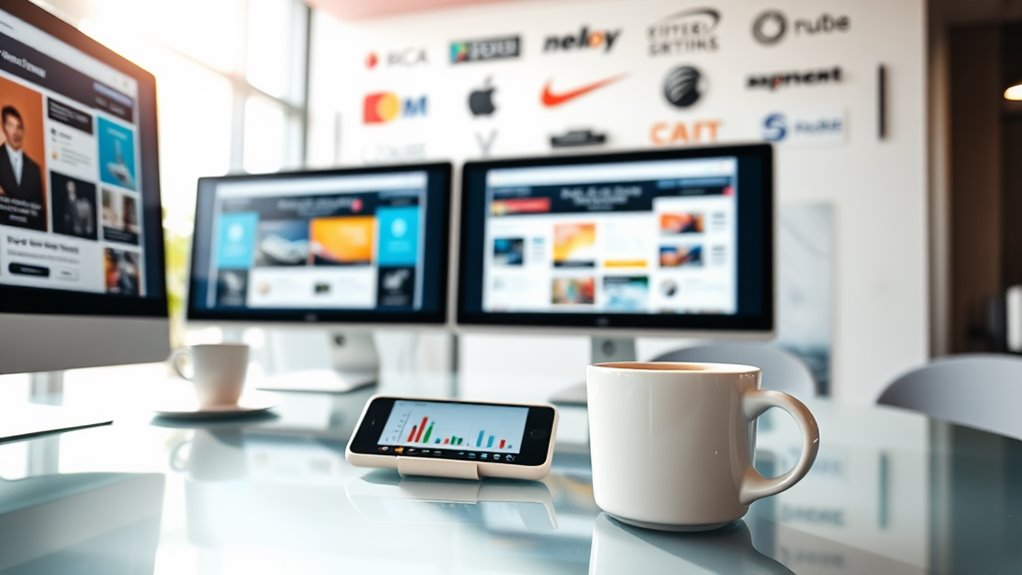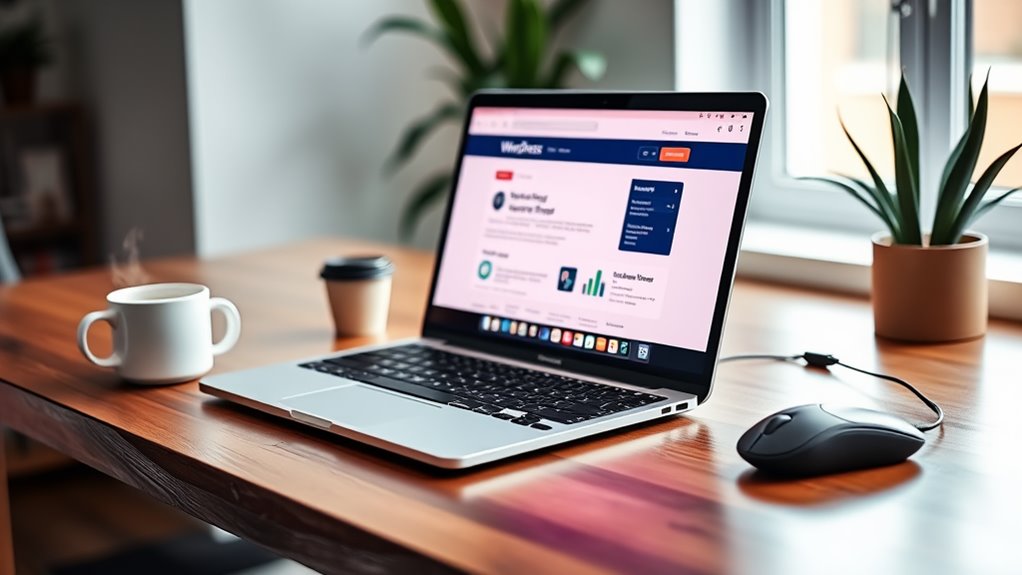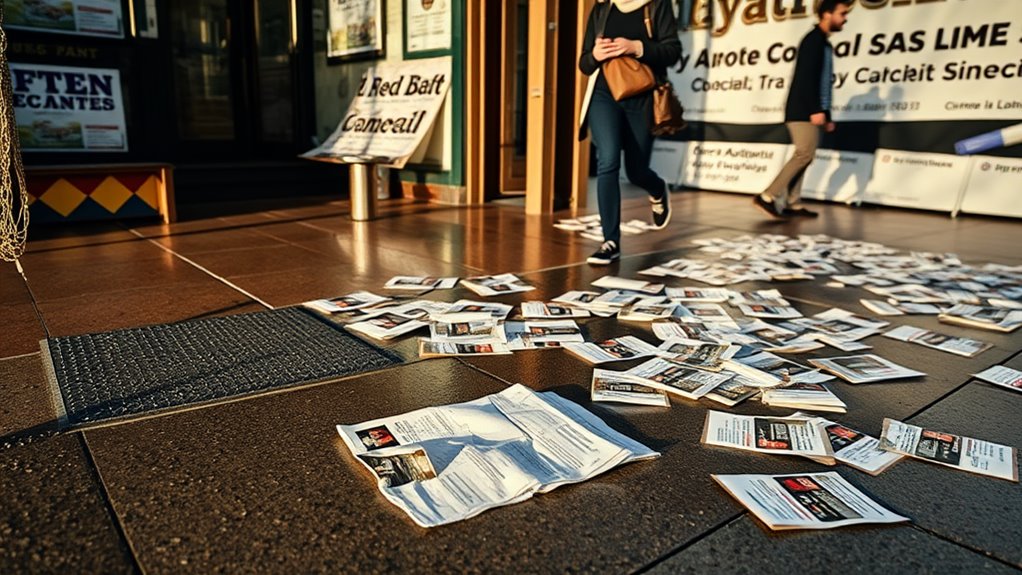Mini flyers go by several common names in the marketing world, with "quarter-page flyers" being the most widely used term (68% of professionals). You'll also hear them called pocket cards, A6 handouts, or small-format promotionals, depending on your industry. For specific sectors, you might encounter terms like leave-behinds (sales), quick-specs (tech), info cards (retail), or mini menus (food service). These compact marketing materials typically come in standard sizes like A6 (4.1" x 5.8") or quarter letter (4.25" x 5.5"). Understanding the various terms and dimensions can help you better navigate your promotional strategy and maximize your marketing impact.
Key Takeaway
- Mini flyers are most commonly known as quarter-page flyers, with 68% of marketing professionals using this term.
- Pocket cards and A6 handouts are popular alternative names for mini flyers, especially in retail and general marketing.
- Industry-specific names include leave-behinds in sales, quick-specs in tech, and mini menus in food service.
- The term "rack cards" is commonly used in the tourism industry for small-format promotional materials.
- These small-format advertisements typically come in A6 (4.1" x 5.8") or quarter letter (4.25" x 5.5") sizes.
Common Names for Mini Flyers
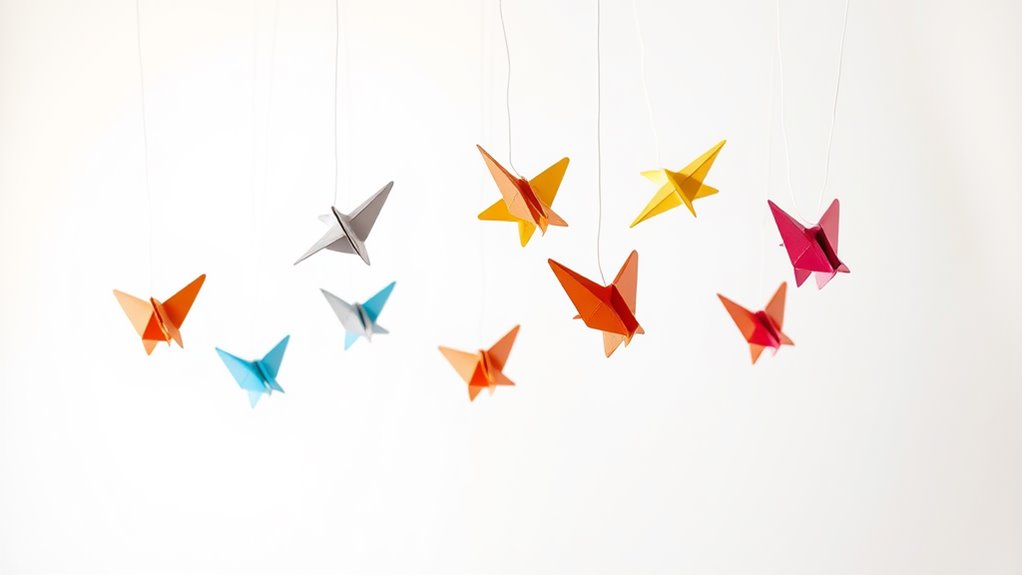
Mini flyers are known by several popular names across different regions and industries. You'll encounter these compact promotional materials under various terms, depending on where you're operating and your target market.
Common Industry Terms:
- Quarter-page flyers
- Mini leaflets
- Pocket cards
- A6 handouts
- Small-format promotionals
- Compact collateral
- Micro brochures
Business-Specific Names:
- Leave-behinds (sales industry)
- Quick-specs (tech sector)
- Info cards (retail)
- Mini menus (food service)
- Rack cards (tourism)
You'll find that 68% of marketing professionals use the term "quarter-page flyers" when referring to these materials, while 22% prefer "pocket cards." The remaining 10% use industry-specific terminology. When you're ordering mini flyers, you'll want to specify the following standard dimensions:
Standard Sizes:
- A6 (4.1" x 5.8")
- Quarter letter (4.25" x 5.5")
- European mini (3.9" x 5.5")
- Compact square (4" x 4")
These measurements guarantee consistency across printing services and help you maintain professional standards in your marketing materials.
Historical Origins of Small Advertisements
While large-scale advertising stretches back to ancient civilizations, small-format promotional materials emerged during the Renaissance with the invention of the printing press in 1440. You'll find that these early mini advertisements, known as handbills, quickly became popular among merchants and town criers throughout Europe.
Key Historical Developments:
- 1440s-1500s: Merchants distributed the first printed handbills in Germany and Italy
- 1600s: London's coffee houses popularized trade cards, small advertisements for local businesses
- 1800s: The Industrial Revolution brought mass-produced flyers and circulars
You'll notice that the evolution of small advertisements closely followed technological advancement. By the 1800s, you could find these promotional materials in various forms:
- Trade cards featuring elaborate illustrations
- Simple text-based announcements
- Product-specific promotional sheets
- Event notifications and public announcements
The standardization of paper sizes in the late 19th century helped establish common dimensions for mini flyers that you'll still recognize today. This development made production more efficient and cost-effective, leading to the widespread adoption of small-format advertising that continues to influence modern marketing strategies.
Types and Sizes Available
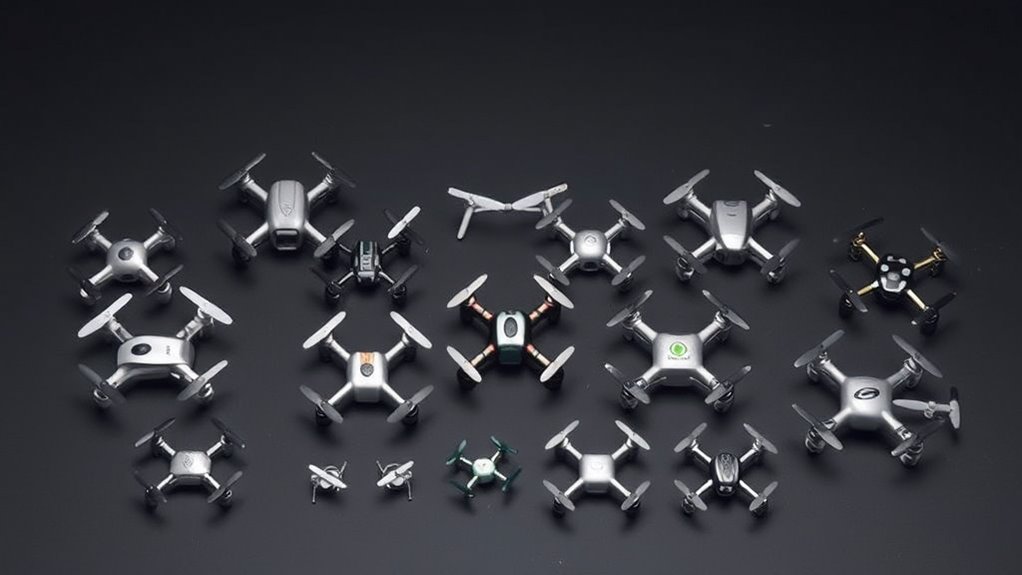
Today's mini flyers come in a rich variety of standardized formats that build upon their historical foundations. You'll find that modern mini flyers typically fall into several distinct categories based on their dimensions and intended use.
Common Mini Flyer Formats:
- Quarter-page (4.25" x 5.5"): Your most versatile option, perfect for local business promotions
- Half-page (5.5" x 8.5"): When you need more space but still want portability
- DL size (4.13" x 8.27"): Your ideal choice for rack displays and mail inserts
- A6 (4.1" x 5.8"): European standard that's gaining popularity in US markets
Specialty Formats:
- Square minis (4" x 4" or 5" x 5"): You'll stand out with these Instagram-friendly dimensions
- Custom die-cut shapes: Transform your message with unique silhouettes
- Door hangers (3.5" x 8.5"): Target specific locations with these specialized formats
You'll want to take into account that 85% of marketing professionals recommend quarter-page sizes for local campaigns, while DL sizes dominate corporate communications at 64% usage rate. Each format serves specific purposes, allowing you to match your marketing goals with the most effective size option.
Digital Vs Traditional Formats
Choosing between digital and traditional mini flyer formats can greatly impact your marketing reach and effectiveness. Today's marketing landscape demands that you understand the key differences between these two approaches in order to make informed decisions.
Digital Mini Flyers:
- Instant distribution through email, social media, and websites
- Easy tracking of engagement metrics and click-through rates
- Cost-effective with no printing expenses
- Quick updates and modifications as needed
- Interactive elements like clickable links and animated graphics
- Environmental sustainability with zero paper waste
Traditional Mini Flyers:
- Tangible presence that creates lasting impressions
- Direct hand-to-hand distribution opportunities
- No technology barriers for recipient engagement
- Higher trust factor among certain demographics
- Excellent for local, targeted marketing
- Better retention rates (studies show 70% higher recall compared to digital)
You'll want to take into account your target audience when choosing between formats. While digital mini flyers work well for tech-savvy audiences and broad reach, traditional formats still hold strong appeal for local businesses and personal connections. You can also implement a hybrid approach, using both formats to maximize your marketing impact and reach diverse audience segments.
Design Elements and Components
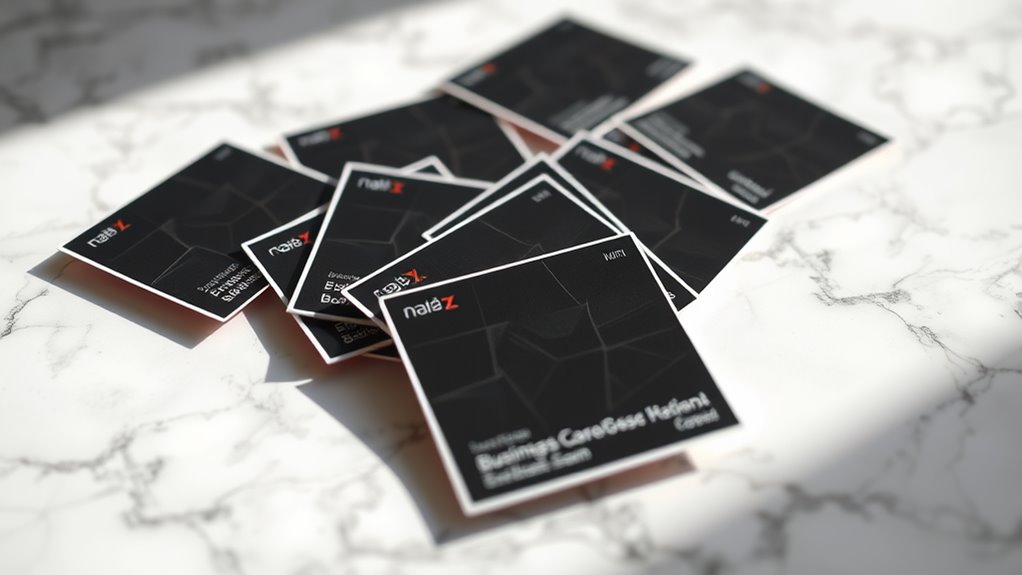
Effective mini flyer design relies on carefully selected elements that work together to grab attention and convey your message. When creating your mini flyers, you'll need to incorporate strategic design components that maximize impact within the limited space available.
Your mini flyer's success depends on three essential design elements that work in harmony:
- Visual Hierarchy: Position your most important information at the top 1/3 of the flyer, using size contrast to guide your reader's eye through the content naturally
- Typography Selection: Choose no more than two complementary fonts, with headlines at 14-18pt and body text at 10-12pt for ideal readability
- Color Psychology: Implement a maximum of three colors that align with your brand identity and create emotional resonance
You'll want to maintain a critical balance between white space and content, keeping a 60/40 ratio to prevent overwhelming your audience. Include a clear call-to-action button or text that stands out from other elements, preferably using high-contrast colors or distinctive shapes. Remember to incorporate your logo at either the top or bottom of the design, sized at approximately 15% of the total flyer area.
Distribution Methods and Strategies
With your mini flyer design perfected, successful distribution will determine your campaign's reach and impact. You'll need to strategically plan how and where you'll distribute your mini flyers to maximize their effectiveness.
Key Distribution Methods:
- Hand-to-hand distribution: You can directly engage with your target audience at high-traffic locations
- Counter placement: Position your mini flyers at checkout counters, reception desks, or information stands
- Door-to-door delivery: Target specific neighborhoods or business districts
- Event distribution: Share at trade shows, conferences, or community gatherings
Strategic Considerations:
- Timing: Schedule distribution during peak hours when your target audience is most active
- Location mapping: Create a distribution grid that covers your key demographic areas
- Legal compliance: You'll need to check local regulations regarding flyer distribution
- Weather conditions: Plan indoor alternatives during inclement weather
Distribution Tracking:
- Use QR codes to monitor engagement rates
- Track conversion rates through unique promotional codes
- Document distribution locations and quantities
- Calculate cost-per-response to measure ROI
- Adjust your strategy based on response metrics
Conclusion
Whether you're calling them leaflets, handbills, circulars, or flyers, these compact marketing tools remain powerful messengers in today's digital age. You'll find that mini flyers continue to bridge the gap between traditional and modern advertising, offering both cost-effective solutions and creative flexibility. By understanding their various formats and implementing smart distribution strategies, you can maximize your message's impact while maintaining an efficient marketing budget.




